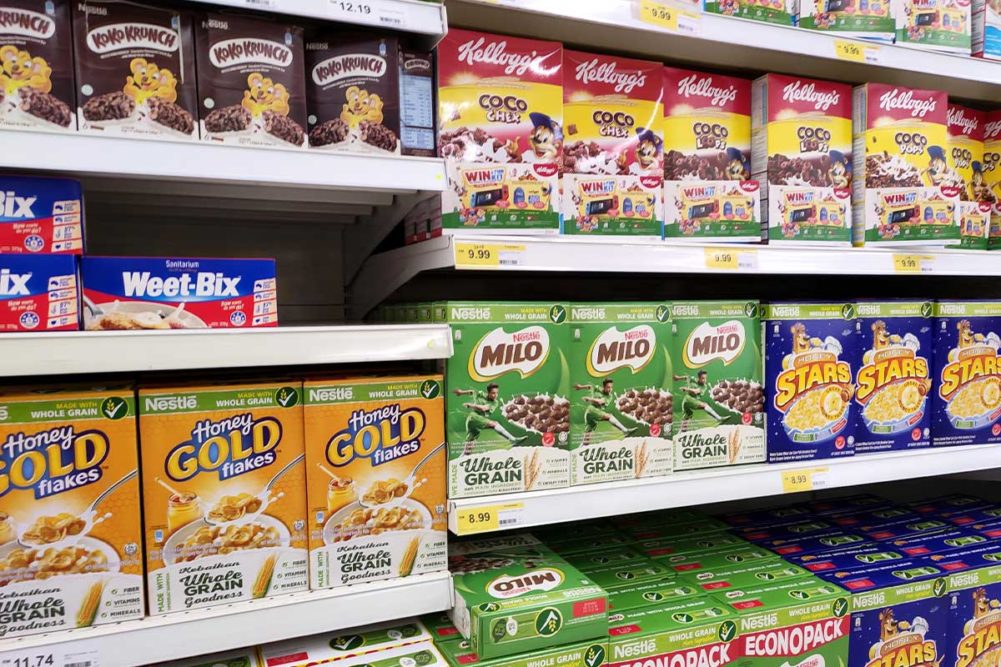BATTLE CREEK, MICH. — Like many major food companies, Kellogg Co. has been working its way through a difficult operating environment marked by bottlenecks and shortages and high cost inflation. But unlike the others, the Battle Creek-based company now finds itself dealing with a month-long strike, an issue that dominated management’s discussion during a Nov. 4 conference call to discuss third-quarter results.
“Our fill rates and our customer service levels are not where we want them to be,” Steven A. Cahillane, chairman, president and chief executive officer, said during the conference call. “And we’re not alone in that either, but we hold ourselves to a very high standard, and we aim to get better and better...We have one particular area that is more challenging than others, and that’s our cereal business, and that’s obviously being compounded because of the strike that we’re going through right now. But outside of that, which is — that’s 20% of our global business. Outside of that, we’re in the same boat as everybody else.”
Mr. Cahillane said supply disruption restrained overall growth in the company’s cereal business during the second and third quarters, but other areas of Kellogg’s business, including snacks, frozen breakfast and plant-based foods, have continued to post good growth on a two-year CAGR basis. To address the challenges in cereal, Kellogg has mitigation plans in place, Mr. Cahillane said, and the company is by no means “complacent.”
“We’ve got big challenges in front of us,” he said. “But we’re quite confident that we’re not going to be at a long term or any kind of permanent disadvantage. This is a transitory event, and we’ll work our way through it.”
He also noted that management knew the contract with union workers was expiring on Oct. 5 and has spent many months developing contingency plans and taking all sorts of measures to prepare, including building inventory.
“Building inventory was a little bit challenged because of the fire in Memphis,” Mr. Cahillane said. “But we also have deployed our white collar workers. We’ve deployed outside labor to keep the plants running, to get the plants running. They’re gaining productivity each and every day. We’ve also leveraged our global supply chain network for cereal to also mitigate. And so we’re working very, very hard on two fronts, to mitigate the effects of the strike on the one hand, and we’re doing that successfully and getting better every day; but also, to get our workers back to work. We want them to get their paychecks. We want them to enjoy their health care. We truly want them back to work. And we think we’ve got a very, very good proposal, again, with increases on top of already industry-leading compensation.
“So I think reasonable heads should prevail based on all that. And that’s kind of the view that we’re taking. We want to get to a negotiated settlement, get back to work, and we think we’ve given the best guidance that we can based on all those different factors.”
The strike at Kellogg’s US cereal plants began just after the conclusion of the company’s third-quarter reporting period. Net income in the third quarter ended Oct. 2 totaled $307 million, equal to 90¢ per share on the common stock, down 12% from $348 million, or $1.02 per share, in the same period a year ago. Net sales increased 5.6% to $3.62 billion from $3.43 billion.
Adjusted operating profit in North America was $334 million in the third quarter, up 4% from $321 million in the same period a year ago. Sales were virtually unchanged year over year, decreasing only slightly to $2.055 billion from $2.059 billion.
“Net sales were flat year on year in the third quarter, with underlying consumption growth well exceeding our shipments due to supply constraints,” Mr. Cahillane said. “Many of these constraints were economy-wide, including shortages of materials, labor and freight. But we had some internal challenges as well. As you know, we entered this year tight on capacity for growing food formats in cereal, frozen from the griddle and plant-based protein as well as certain pack formats and snacks. Add to that the fire that interrupted production at one of our cereal plants and you can appreciate just how constrained we have been.
“The good news is that we remain in growth on a two-year CAGR basis and that our revenue growth management actions are resulting in good price/mix growth. This price realization, along with good execution of productivity programs is crucial for mitigating the margin pressures of high cost inflation and incremental costs and inefficiencies related to the broader bottlenecks and shortages in the economy.”
Outside the United States, Kellogg delivered strong sales performance across Europe, Latin America and Asia Pacific, Middle East and Africa (AMEA). In Europe, Pringles sustained its momentum in the third quarter, and portable wholesome snacks also rebounded. Meanwhile, strong in-market performance in cereal led by Mexico boosted sales in Latin America.
Kellogg reaffirmed its full-year guidance for operating profit, earnings per share and cash flow, while raising organic net sales guidance to 2% to 3%, up from earlier guidance of 0% to 1%.






